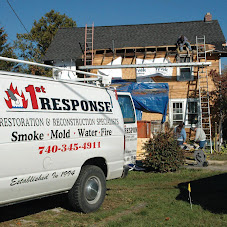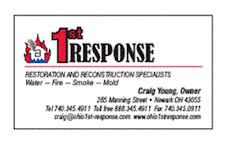The ice storm that hit eastern Canada in January, 1998 was a laboratory for concentrated research into severe ice accumulation on roofs.
Removing ice on roofs describes some of the techniques developed from the research for dealing with extensive roof icing and ice dam problems.
Please note: Some of these techniques are for skilled tradespeople only. Call 740-345-4911 for additional information. No ice problem on your roof is serious enough to risk broken bones — or worse.
The balance between removing ice and damaging the roof
Thick ice is hard to remove.You must decide if trying to remove it will cause more damage than leaving it on the roof. Tools, such as hammers, shovels, scrapers, chain saws, and devices such as shoes with ice spikes can damage roofing materials or the structure below. Chemical de-icers can discolor shingles, break down membranes and corrode flashings and drains. De-icers can also damage plants on the ground.
What to do in an ice storm emergency
First: Observe and evaluate the situation every day. Is the ice causing a structural problem? Is there water damage? Do you have to do anything?
Second: Evaluate your capabilities and limits. Do you have the equipment, the agility and the help to work safely and efficiently? If you don’t, get professional help before the situation becomes urgent.
Third: To prevent damage, do as little as possible. Total clearing has the greatest potential for damage to the roof and to people and property below. Often, clearing dangerous overhangs and icicles and making drainage paths is enough.
1st Response
Subscribe to:
Post Comments (Atom)













No comments:
Post a Comment